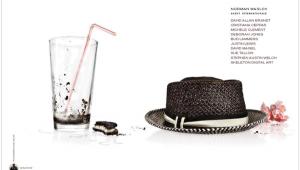Business Trends
Are There Digital Photography Clients? Or Is It Just A Mode Of Delivery? Page 2
For the next 15 years he did a wide range of national and international advertising work, becoming known for his saturated color images and keen sense of design and composition. Satterwhite has won many national and international awards. He is considered an authority on color and design, and has four published books of his work on this subject. Most recently, he was featured on www.nikonnet.com in their "Legends Behind the Lens" series. In recent years he has focused his attention on making films and commercials as a Director of Photography (DP).
 |
Shutterbug: The advantages and disadvantages of film vs.
digital capture are well documented, but is there such a creature as a digital
client?
Al Satterwhite: No, clients are clients. Some will need digital
capture for the time advantage. Almost everyone accepts or requires digital
file delivery. Shooting for magazines is usually all digital capture due to
their deadlines. Advertisers and corporate work you usually have more time.
I choose film or digital based on deadlines, creative decisions, and size of
image use.
SB: Are there some types of assignments where you prefer digital
capture?
AS: I like film because I have shot it forever, the processing
and editing is easy for me and then I can scan it. But now, for travel assignments,
I will take the digital camera and memory cards and not have to worry about
film going through airport security.
SB: Do you ever see a downside to digital capture?
AS: When I see so many photographers watching the back of their
camera instead of the images taking place in front of the camera. This constant
editing in camera can break the train of creative flow. Also, I find editing
a large number of digitally captured images takes more time than trying to compare
three or four film images side by side on a light table.
SB: What are the business advantages to shooting film?
AS: The main advantage is you can always go back and make more
scans, better scans, new technology scans. Everything is constantly being upgraded
and in two to five years you will see bigger, better, sharper images made from
film scans.
 |
SB: What is the advantage for you with digital?
AS: The great thing about digital is the Metadata attached
to the image allows you to add more information--more than you can write
on a slide mount! I am scanning most of my past film and keeping original film
files. For example, for a recent request from GQ magazine I already had the
negatives scanned and filed so I was quickly able to pull 72dpi JPEG files and
e-mail them my selections.
When they decide on the final image they want, I can e-mail 300dpi JPEG or maybe
even TIFF files.
SB: What are some of the business issues of digital capture
for you?
AS: When shooting digital, you and the client both have originals.
So usage rights need to be spelled out and you now have an increased emphasis
on your business issues. Another is image storage. Clients have storage issues
with digital, space is usually limited--what happens when they toss the
files due to lack of space?
SB: What are the most important issues to photographers for
the business side of digital?
AS: One, whether shooting film or digital, digital delivery
is key. Every photographer today needs to be able to offer this service. Two,
be prepared to organize and run your business to recover your investment in
equipment, memory cards, digital storage, and the like. Be sure your clients
know that just because it is digital it isn't cheaper!
- Log in or register to post comments
















































